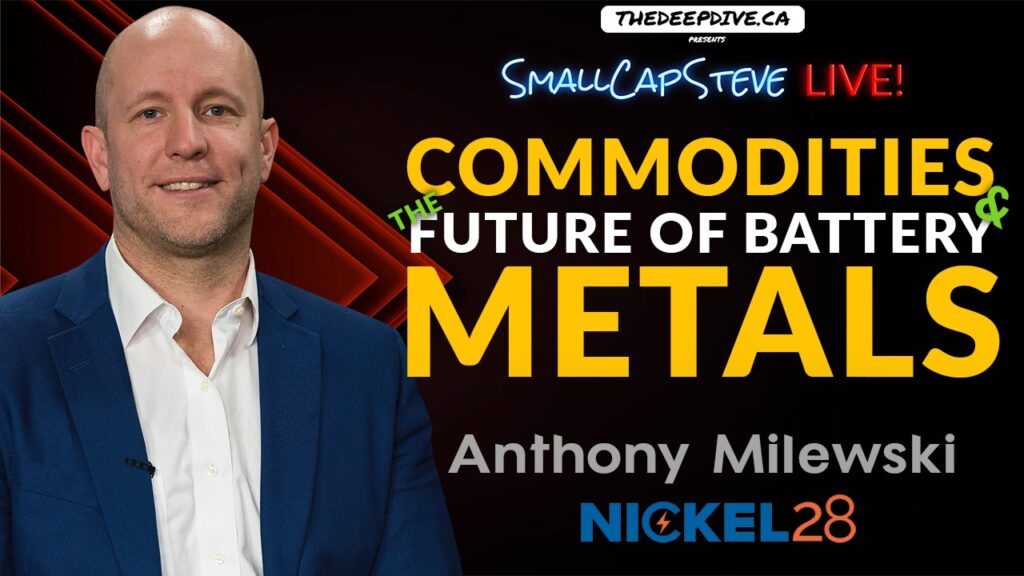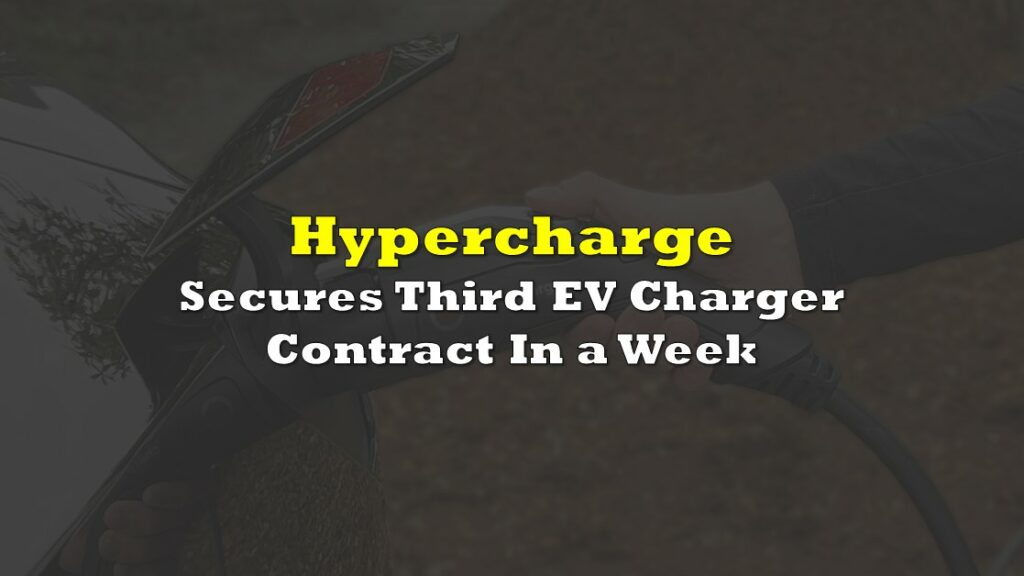Today I want to talk about a stock that has been all over FinTwit.
Hypercharge (NEO: HC).
Full disclosure, I don’t own any shares, I’m not connected to this company. I’m not short.
This charging station distributor has been making waves with Canadian and American retail investors with its stock soaring a jaw-dropping 800% in just the last week alone.
In today’s video we will take a look at Hypercharge. We’ll be tackling the recent share price, the company’s business model which we find somewhat elusive, we’ll dive into Hypercharge’s four recent deals, take a look at the company’s share structure and financials, and we’ll explore the possibility of shorts getting roasted. Let’s dive in.
Picture this: Hypercharge’s stock, lying dormant like a bear in hibernation since its public debut in late November, suddenly wakes up and decides to throw a party. And not just any party – we’re talking a Wall Street rager that’d make The Wolf himself green with envy.
On March 31st, the stock was modestly hanging out at a cool $0.46. Fast forward a few weeks, and it’s living the high life at a staggering $6. Now what’s the secret sauce behind this massive volume and meteoric rise?
Hypercharge has been playing the social media game like a pro, with YouTubers and TikTok influencers name-dropping the company left and right. Couple that with a few intriguing news releases, and you’ve got yourself a recipe for a stock market frenzy. On April 10th alone, Hypercharge traded a mind-boggling 14 million shares worth $54.9 million – that’s enough to make an 80’s stockbroker weak in the knees.
The business model
The company uses all kinds of buzzwords and adjectives to describe what they do on their deck. From helping partners grow their business and speed up the transition to a carbon-neutral future.
But here’s the rub: while Hypercharge claims to offer these fantastic charging solutions, it’s a tad unclear if they actually manufacture the units themselves. Contrary to what many of the YouTubers are saying, their filings state they purchase the chargers from a company called Oasis Charger. So from my view point, it reads like this company is really just a distributor of electric charging equipment that offers various purchasing options, including direct purchase, leasing options, and the trendy charging as a service model (CaaS).
Now, as they scale up it could get interesting. They likely will offer meaningful subscription programs and big data that could turn into nice high margin revenue. The operative word there is could. This is risk capital where very few companies manage to execute.
That being said, management is off to a solid start. In 2022, Hypercharge sold 1,491 ports, delivered 500, activated 23 partnerships, expanded to 8 provinces and 8 states, and raked in a cool $1.7 million in revenue. They’ve set their sights even higher for 2023, aiming to double the number of chargers sold and are guiding their revenue to be between $5 and $7 million. The company points to a $13 million sales pipeline, that they expect is growing based on a forecast predicting 932% growth in EV charger installations by 2027.

The four recent deals
Lets talk about the recent deals signed by Hypercharge. Unfortunately, they leave us guessing about the money involved.
It all started on March 28th they inked an agreement with CHEK Media Group to provide six Level 2 chargers. Just a day later, on March 29th, Hypercharge announced a whopper of an agreement with King George Hub to supply a staggering 748 Level 2 chargers. These are schedule for early 2025 in a 2 million square foot mixed use space where the chargers will be available at every parking stall in the complex.
Then on March 31st Hypercharge announced they would provide 128 Level 2 chargers to Lark Group of Companies for a City Center development in Surrey, BC. And on April 5th, they secured yet a small agreement with a First Nation band in Alberta.
The share structure
Let’s take a closer look at Hypercharge’s share structure.
According to the company’s website, the share structure breaks down as follows:
- 30 million founders’ shares were issued, mostly between 2 and 2.5 cents, with some advisory shares at 40 cents and additional shares related to acquisitions. These shares are subject to a 36-month lock-up period.
- Over $2.5 million was raised at 25 cents, creating 10.5 million shares.
- Over $4 million was raised at 40 cents, issuing another 10.3 million shares.
- Finally, the company completed a $6 million financing at 60 cents, issuing another 10 million shares.
- For simplicity, we’ll ignore the performance-related warrants outstanding. As of December 31, 2022, Hypercharge had 61.7 million shares outstanding, 6.63 million warrants at an average exercise price of 34 cents, and 2.8 million options at an average exercise price of 37 cents.
Taking the lock-up period and various financing rounds into account, we find that about 24 million shares are currently free trading. This includes 1.5 million from founders, 2 million from the 25-cent round, 10.4 million from the 40-cent round, and 10 million shares from the 60-cent financing.
More shares from another round will begin trading next month, adding even more liquidity to the stock.

The financials
Hypercharge’s financial position at the year-end showed $4 million in cash on their balance sheet. Although the company has likely used some of that cash since then, they have also announced a $5 million financing at $1.05 per unit, which comes with a half warrant at $1.35. The company’s debt is negligible, with only $1.1 million in accounts payable.
In Q4, Hypercharge reported $1.2 million in top-line revenue, boasting gross margins of around 21%. However, the company’s financials are somewhat challenging to decipher at this stage, as they spend nearly three times more on consultants than they generate in gross profit. Investors will want to keep an eye on the company’s operating leverage as it scales up.
Hypercharge’s deck claims that they expect to double their top-line revenue in 2023, which will provide insight into their operating leverage over the next year. However, it may take a couple more years of rapid growth before we can gauge the company’s potential profitability accurately.
Currently, the company is losing around half a million dollars a month in operating cash flow. The ongoing financing round should provide at least a year’s worth of operating cash flow, but as with all early-stage companies, more financings should be anticipated.
As to be expected, some funds will likely be directed toward capital expenditures.
Why the volatility?
As I said earlier, Hypercharge recently announced a financing at $1.05 per unit, with no hold on shares sold under the offering, meaning they are free trading. The absence of a hold period might have led investors to believe they had an allocation and prompted them to short the stock. If those investors failed to secure an allocation, they could have been forced to cover their short positions at any price possible, driving the stock price higher.
This phenomenon of short squeezes, where the stock price deviates significantly from its fundamentals, has been observed in other companies like FaceDrive and Tilray. In these cases, short sellers scramble to cover their short positions, creating a self-reinforcing upward price movement.
The company’s stock promotion efforts have also contributed to its recent performance. Hypercharge enlisted Gold Standard Media for a $300,000 digital awareness contract, which appears to have been extremely successful in generating interest in the stock. One of the consultants, Morris Invest, received $30,000 for sponsoring a YouTube video that has garnered over 7 million views since April 2, 2023. In the video, Morris made bold claims like “this stock is going to explode,” a statement most promoters avoid due to fear of regulatory repercussions.
Additionally, a TikTok video featuring an AI-generated recommendation for Hypercharge was discovered, another unusual tactic for digital marketers to employ given the potential regulatory issues.
In response to the stock promotion activities, the OTC markets requested Hypercharge issue a statement addressing the activity in the stock. We haven’t heard anything about that since.
To conclude
In the world of the stock market, you’ll find a diverse array of investment opportunities. On one end of the spectrum, you have your safe, reliable stocks that generate cash flow and have a proven track record of success. On the other end, there are riskier stocks that might be bleeding money but have managed to pique the interest of traders and investors who believe in the company’s potential to strike gold in the future.
As someone once wisely told me, there’s a difference between investing and taking a trip to the casino. Investing in pre-revenue microcaps is more like gambling than investing. But as we’ve seen with stocks like Tilray and FaceDrive, short squeezes can turn unexpected stocks into a 10-bagger even if they don’t love the fundamentals.
Hypercharge has been the talk of the town in the Canadian junior market for the last two weeks, with its stock performance surpassing even the wildest expectations. And at this point, it’s clear that the company will need to continue raising funds to execute its ambitious plans.
However, when there’s such a high level of interest in a stock, that problem becomes much easier to solve. The real question is whether Hypercharge can maintain the hype surrounding its stock and keep raising money at higher-priced financings.
While we can’t predict the future, one thing is certain: Hypercharge has managed to capture the attention and imagination of the Canadian small cap trader. But I’ll remind you, we’ve seen this story before, let’s just hope it doesn’t end like it does 99 percent of the time.
Information for this briefing was found via Edgar and the sources mentioned. The author has no securities or affiliations related to this organization. Not a recommendation to buy or sell. Always do additional research and consult a professional before purchasing a security. The author holds no licenses.









